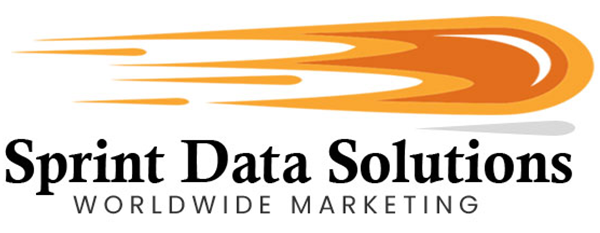Solar Power Is Generating More Leads Than Ever Before
Energy is the backbone of the American lifestyle, shaping how people live, work, and interact with the world. Electricity, in particular, powers nearly every aspect of daily life—from lighting and climate control to charging mobile devices, electric vehicles, and operating household appliances. Its importance transcends convenience; electricity is so vital that it is classified as a utility rather than a luxury. Businesses rely heavily on uninterrupted electrical supply to operate systems such as computers, servers, communication tools, and manufacturing equipment. Critical infrastructure, especially healthcare facilities like hospitals and emergency response centers, depends entirely on stable electrical power to preserve life and enable urgent medical interventions, highlighting just how deeply electricity is embedded in the fabric of modern American society.
To meet this immense demand, the United States has developed a diverse and evolving landscape of electricity generation. Historically, coal-fired power plants were dominant, supplying large-scale energy for cities and industry. Over time, advancements led to the widespread use of hydroelectric power, capturing the kinetic energy of flowing water to spin turbines and generate electricity. The mid-20th century introduced nuclear power, offering a high-output, low-emission alternative by splitting atoms in carefully controlled reactors. Today, this legacy of innovation continues as America transitions to cleaner, more sustainable energy sources. Wind turbines now dot rural landscapes and coastlines, capturing the movement of air, while vast solar farms convert sunlight into energy through photovoltaic panels. These renewable options are increasingly cost-effective and scalable, helping to reduce greenhouse gas emissions and dependency on finite fossil fuels.
While nuclear fusion—the process that powers the sun—remains a promising but elusive goal under intense research, current technologies have already revolutionized the energy sector. The growing integration of smart grids, battery storage, and decentralized power systems like rooftop solar panels is further reshaping how energy is generated and consumed. In essence, electricity is not just a convenience but a critical enabler of contemporary civilization, and the ongoing innovation in how it is produced reflects a national priority to balance reliability, affordability, and environmental responsibility.

Coming Into Its Own
Solar power, both as a theoretical concept and as a practical technology, has a history that stretches back many decades. While early applications were limited in scope, they laid the groundwork for the expansive capabilities we see today. By the 1980s, solar cells—though far less efficient than their modern counterparts—were already effectively powering small electronic devices such as calculators and wristwatches. However, generating large-scale electricity using solar technology posed considerable challenges. Early solar farms required sprawling tracts of land to accommodate vast arrays of photovoltaic panels. To maximize sunlight capture, some installations even incorporated motorized heliostats—mirrors that tracked the sun’s movement and redirected light to enhance panel efficiency. These early solar fields were predominantly located in large, open, and sunny regions such as the deserts of California, where consistent sunlight and flat terrain supported these experimental efforts.
In contrast, the landscape of solar energy production has transformed dramatically in recent years. Innovations in photovoltaic technology have significantly boosted the efficiency of solar cells, allowing them to convert a much greater portion of incoming sunlight into usable electrical energy. Modern solar panels are not only smaller and more aesthetically integrated into buildings, but they are also capable of generating substantial electricity from relatively modest surface areas. For instance, solar installations on the rooftops of average residential homes can now provide enough power to meet—or even exceed—the entire household’s energy demands. In many regions, this surplus electricity can be fed back into the local power grid, offering homeowners the potential to receive energy credits, government incentives, or direct financial compensation depending on local utility policies. These advancements have made solar energy more accessible, sustainable, and economically viable for a broader segment of the population.
Solar power has made significant advancements in recent years, evolving into a highly efficient and accessible source of renewable energy. Once the initial installation costs are covered, it provides a virtually free supply of electricity, making it increasingly attractive to homeowners, businesses, and governments alike. This growing interest is driven by a combination of rising energy prices, environmental concerns, and improvements in solar panel efficiency and affordability. Additionally, innovations in battery storage and grid integration have enhanced solar energy’s reliability, enabling users to store excess power and reduce dependence on fossil fuels. With incentives and tax credits available in many regions, the economic and environmental benefits of solar energy continue to expand.
A Stable Alternative
One of the most compelling advantages of solar energy over other forms of electricity generation lies in the unparalleled stability it offers to consumers, both in terms of energy availability and long-term economic predictability. While many renewable energy sources contribute positively to reducing fossil fuel dependency, some, like wind power, can be subject to erratic environmental conditions. Wind turbines, for instance, are entirely dependent on the presence of wind, meaning that energy output can fluctuate dramatically day-to-day or even hour-to-hour. In contrast, solar panels offer a more consistent energy profile. Although their efficiency dips during cloudy or rainy conditions, modern photovoltaic (PV) technology still allows for substantial energy capture even under reduced sunlight. Innovations such as bifacial panels, solar tracking systems, and improved inverter technologies have further enhanced their ability to produce electricity under varied weather conditions, ensuring a steadier and more predictable output.
Beyond environmental consistency, solar energy also delivers significant economic resilience. Properties equipped with solar power systems can drastically reduce their reliance on grid electricity, thereby insulating themselves from volatile energy markets. In many cases, solar-powered homes and businesses become net producers of energy, feeding surplus electricity back into the grid through net metering programs, and earning credits or financial returns. This financial buffer is especially valuable in a global context where fossil fuel markets are influenced by geopolitical conflicts, trade tariffs, supply chain disruptions, and corporate pricing strategies. Unlike oil or natural gas, the “fuel” for solar energy—the sun—is abundant, universally available, and not subject to market speculation or international sanctions. Consequently, solar-powered properties are far less exposed to unpredictable energy costs, offering homeowners and enterprises a welcome sense of budgetary stability.
In addition to performance reliability and financial protection, solar energy also empowers users with a high degree of energy independence. Traditional power grids are vulnerable to outages caused by severe weather, infrastructure failures, or cyberattacks. For homes and businesses that rely solely on the grid, this can mean hours or even days without power. However, properties equipped with solar panels—particularly when paired with battery storage systems like the Tesla Powerwall or similar technologies—can continue operating seamlessly even during prolonged blackouts. Unlike diesel or gas-powered backup generators, solar systems do not require fuel refills, are quieter, and do not emit pollutants. This autonomy is not only convenient but can also be critical in emergencies, allowing continued operation of essential appliances, climate control systems, and communications equipment.
In essence, solar energy stands out as a transformative solution for those seeking not just environmental sustainability, but also a stable, cost-effective, and self-reliant energy future. Its unique combination of dependable performance, economic foresight, and operational independence makes it an increasingly attractive option for both residential and commercial stakeholders in today’s uncertain world.
It’s Not Just Homes
While solar panels have become a common sight on private residences, the benefits of adopting solar energy extend well beyond individual homes. Businesses across a wide range of industries can take advantage of this renewable energy solution, reaping significant, long-term financial and operational rewards. Commercial buildings often have large, flat rooftops ideal for solar installations, allowing for greater energy generation potential compared to residential systems. Once the initial investment is made, companies can dramatically lower their utility expenses, take advantage of tax credits, and protect themselves from the volatility of energy prices. Moreover, transitioning to solar power helps businesses meet environmental sustainability goals, improve their public image, and appeal to eco-conscious consumers and partners. Industries such as manufacturing, retail, agriculture, and warehousing are especially well-positioned to benefit, not just by reducing operating costs but by enhancing energy independence and resilience. As environmental regulations tighten and energy costs rise, investing in solar power is increasingly becoming a strategic decision for forward-thinking companies.
Manufacturing
Manufacturing businesses are uniquely positioned to benefit substantially from solar power for two key reasons. Firstly, manufacturing facilities typically span vast areas, with expansive rooftops that often go unused. These large roof surfaces provide an ideal platform for installing a significant number of solar panels, maximizing the potential for onsite energy generation. Secondly, the manufacturing process itself is highly energy-intensive, with machinery and operations running continuously, resulting in substantial electricity consumption.
By leveraging solar energy, manufacturers can drastically cut their dependence on conventional utility providers. While the initial installation of solar infrastructure may appear costly, it represents a strategic investment with long-term returns. The energy produced by solar panels reduces utility bills almost immediately, translating into ongoing savings that can be reinvested into other operational areas. In addition to cutting costs, solar power also provides greater predictability in energy expenses, shielding businesses from volatile electricity rates. Over time, these benefits enhance operational efficiency, support environmental sustainability goals, and strengthen the overall financial health of the company.
Livestock
Farming and agriculture continue to be integral pillars of American life and the broader economy. Within this sector, livestock operations are especially dependent on reliable energy sources to maintain animal health and productivity. This is particularly true during the winter months, when animals such as poultry must be housed in temperature-controlled environments to ensure their well-being and optimize production outputs like egg laying. Heating these facilities can lead to substantial energy costs, creating financial pressure for farm operators. However, solar energy presents an increasingly viable solution to this challenge.
Modern livestock barns and facilities often feature large, flat roof surfaces that are perfect candidates for solar panel installations. These expansive, underutilized spaces can be transformed into power-generating assets, capable of significantly reducing electricity expenses associated with climate control and other daily operations. In poultry farming, for instance, where maintaining a stable indoor temperature is critical for animal welfare and product quality, solar power can help stabilize utility costs and mitigate exposure to fluctuating fuel prices. The initial investment in solar infrastructure is often offset by long-term savings, federal or state tax incentives, and the potential to sell excess power back to the grid. As a result, transitioning to solar energy not only promotes sustainability but also delivers a strong return on investment for livestock businesses, enhancing resilience and profitability in the face of rising energy demands.
Commercial
It’s not only industrial-focused businesses that stand to gain from solar power—white-collar sectors such as technology firms, financial institutions, legal practices, and service-oriented enterprises can also realize substantial benefits. Modern office buildings consume a significant amount of electricity to support their operations, including powering an array of computers, servers, printers, copiers, lighting systems, heating and cooling infrastructure, and telecommunications equipment. While these devices may not match the energy intensity of heavy manufacturing machinery, their cumulative and continuous usage throughout the business day represents a considerable energy burden. By investing in solar energy systems, businesses can mitigate these costs significantly. The installation of photovoltaic panels on rooftops, parking canopies, or adjacent land allows for a measurable reduction in utility expenses. In some cases, companies with suitable building orientation and sufficient space may achieve net-zero energy consumption or even disconnect entirely from the conventional power grid. Moreover, adopting solar energy not only yields long-term financial savings but also enhances sustainability credentials, improves resilience against utility rate hikes, and supports corporate social responsibility initiatives—all of which can contribute to a stronger brand image and customer loyalty.
Retail
Retail businesses are among the largest consumers of electricity, utilizing significant energy for lighting, climate control, refrigeration, digital displays, security systems, and point-of-sale operations. This energy demand is particularly pronounced in large-scale retail environments such as shopping centers, warehouse clubs, and standalone big box stores. These facilities typically possess expansive roof areas and other underutilized property surfaces, which represent a substantial opportunity for renewable energy deployment. By installing solar panels on rooftops, parking structures, or adjacent land, retailers can significantly reduce reliance on the traditional power grid. The energy generated from solar installations not only offsets daily consumption but also introduces a level of consistency and predictability to energy costs that utility providers often can’t match due to variable pricing and peak demand charges. In many cases, solar systems can cover the majority—or even the entirety—of a facility’s electrical needs, converting a variable operational cost into a more manageable, long-term capital investment. Over time, this transition enhances profit margins, reduces exposure to energy market volatility, and contributes to broader sustainability goals, all while utilizing space that would otherwise remain idle.

Residential
One of the most transformative applications of solar power generation has been in the private residential sector. Homeowners across various regions often face unpredictable electricity bills due to fluctuations in energy demand, diverse utility pricing models, and tiered or time-of-use rate structures imposed by providers. This uncertainty can make budgeting for monthly utilities difficult, particularly in areas where peak demand pricing can drastically inflate costs during certain hours. By contrast, adopting solar energy helps to stabilize and even reduce these costs, offering a consistent and renewable alternative. With solar panels installed, homeowners no longer need to time their electricity usage to avoid expensive “peak hours.” Furthermore, advancements in home battery storage systems—such as lithium-ion-based solar batteries—enable surplus daytime energy to be stored for use during the night. This combination of generation and storage not only ensures uninterrupted access to electricity but can also significantly reduce dependence on the traditional grid. In many cases, households can achieve near-complete energy autonomy, shielding themselves from future rate hikes and contributing to a more sustainable energy ecosystem.
Rural Residents
Solar power generation is a highly effective and increasingly essential solution for individuals living in rural or remote regions. Even when these areas are technically connected to the main electrical grid provided by a utility company, they often suffer from prolonged outages during extreme weather events, equipment failures, or natural disasters. Urban centers typically receive faster maintenance and repair services due to population density and proximity to service hubs, while rural areas may wait hours or even days for restoration, especially if locating the exact fault in the power line is complex or spans large geographic distances. In contrast, a solar energy system, especially when paired with battery storage, can ensure a steady and reliable electricity supply that is not dependent on the grid. This level of energy autonomy is particularly valuable in regions prone to recurrent power disruptions caused by seasonal storms, wildfires, or heavy snowfall. For homes in such environments, solar panels not only offer resilience and convenience but also represent a sustainable path to energy independence, ensuring that daily life continues uninterrupted regardless of wider infrastructure challenges.
It is through this dynamic engagement with customers and businesses that Sprint Data Solutions Worldwide Marketing truly demonstrates its value—delivering precision-targeted outreach strategies, advanced data analytics, and fully customized marketing campaigns tailored to each client’s unique goals. By leveraging deep demographic insights, consumer behavior trends, and multichannel platforms, Sprint empowers organizations to not only reach their ideal audience but also foster lasting connections that translate into measurable growth and sustained success.
Who Is Sprint Data Solutions Worldwide Marketing?
Sprint Data Solutions Worldwide Marketing is a proudly American-owned and operated company, founded in the vibrant city of Las Vegas, Nevada, by a disabled veteran. The company’s origins are rooted in a commitment to quality, integrity, and outstanding customer service—principles that fueled its steady growth and longstanding client relationships. Over the years, Sprint Data Solutions has assembled a seasoned team of marketing professionals with a combined industry experience exceeding half a century, delivering expert insight across a range of promotional disciplines.
The company initially established itself as a leader in direct mail marketing, mastering the intricacies of database acquisition, management, segmentation, and campaign analytics. This foundational expertise in data-driven outreach set the stage for a smooth and strategic transition into digital marketing as it emerged as a dominant force in the advertising landscape. Sprint leveraged its early adoption of digital platforms to secure an advantageous position in online marketing, enabling clients to achieve measurable gains in reach and engagement.
As its client base grew, Sprint Data Solutions expanded from offering services strictly within Nevada to providing nationwide marketing coverage, including remote states like Alaska and Hawaii. With continued success, the company extended its footprint beyond U.S. borders, serving businesses in Canada and Mexico, and eventually bridging into European Union markets, such as France. Today, Sprint offers clients comprehensive access to domestic and international marketing channels, combining traditional methods with digital innovation to craft customized, high-performance campaigns that drive results globally.

How We Can Help
Sprint Data Solutions Worldwide Marketing has dedicated years to meticulously building and refining a vast and versatile repository of databases containing verified contact information. This effort has been strengthened through strategic partnerships with credible and reputable third-party data providers, allowing for the continuous expansion of our reach and ensuring access to a broader and more diverse pool of potential contacts. Our data acquisition process is conducted entirely through ethical and legally compliant methods. These include user opt-ins via newsletter subscriptions, account registrations on various websites, service enrollments, participation in voluntary surveys, and consented contributions such as the collection of business cards at events with the clear intention for marketing use. This adherence to ethical standards not only ensures regulatory compliance but also upholds the trust of both our data sources and our clients.
Equally important, our databases are dynamic in nature. Unlike static contact lists that quickly become obsolete, our data sets are treated as living documents, subject to ongoing scrutiny and regular updates. Our dedicated teams and automated systems routinely review and refresh the data to reflect current realities. This is particularly crucial in specialized segments: student records must be revised as individuals graduate or transfer; employment details are updated as professionals change jobs or companies; and senior citizen databases are maintained with sensitivity to changes such as relocation or death. These continuous revisions ensure that our clients receive only the most accurate and actionable contact details, reducing bounce rates and enhancing campaign effectiveness by avoiding outreach to unreachable or irrelevant recipients.
However, merely possessing an extensive database is not the sole determinant of successful marketing. At Sprint Data Solutions, we integrate advanced artificial intelligence systems and machine learning algorithms into our data analytics workflows. These cutting-edge technologies enable us to perform intelligent segmentation, prioritization, and filtering of data to align with each client’s specific goals. Instead of delivering broad, undifferentiated lists, our systems deliver precision-targeted datasets tailored to the unique requirements of each campaign, thereby maximizing relevance and engagement.
One of the pillars of our data intelligence framework is geographic targeting. Clients can scale their campaigns from a nationwide rollout to pinpoint targeting in local areas. Whether the objective is to blanket the entire United States or to focus on a particular region such as the Pacific Northwest or the New England area, our infrastructure can support these goals. Clients may narrow down their reach further—to an individual state like Texas, a city like Chicago, or even a specific neighborhood, such as Manhattan’s Upper West Side or Boston’s Beacon Hill. This allows for hyper-localized campaigns that speak directly to regional sensibilities and needs.
Another critical axis of data refinement is demographic segmentation. We offer the ability to sort and filter contacts based on various attributes that affect consumer behavior. These include ethnicity, which can be essential for culturally nuanced marketing; religious affiliation, which is particularly relevant for campaigns centered around faith-based communities like the Catholic or Jewish populations; income levels, allowing brands to engage with either high-net-worth individuals or budget-conscious households; and additional indicators like age ranges or medical conditions such as diabetes or arthritis, which are crucial for health-related outreach. This multi-layered approach ensures that clients are not only reaching out to the right audience but doing so in a way that is thoughtful, relevant, and likely to yield higher conversion and engagement rates.
By combining ethical data sourcing, continuous updates, AI-driven analytics, and deep customization across geography and demographics, Sprint Data Solutions Worldwide Marketing offers a holistic, high-performance solution for data-driven marketing strategies that deliver measurable results.
Database Formats & More
Sprint Data Solutions Worldwide Marketing offers comprehensive contact data solutions tailored to fit the specific format requirements of any marketing campaign. For direct mail initiatives, the company provides accurate physical mailing addresses that can target either general consumers or business entities. Digital marketing campaigns benefit from verified email addresses, segmented for both B2C and B2B applications. In B2B campaigns, contacts typically include key decision-makers within organizations, ensuring communication reaches those with authority. Telemarketing strategies are supported with access to both residential and business phone numbers, again emphasizing connections with corporate decision-makers. Additionally, mobile phone numbers are available to support more modern approaches such as SMS/text message marketing, allowing for timely and personal outreach.
Beyond data provision, Sprint Data Solutions also offers specialized services like comprehensive, turnkey direct mail solutions designed for businesses that lack the internal resources or expertise to manage such campaigns independently. This all-inclusive service walks clients through each step—from concept development and creative design to printing, production, and final distribution—ensuring a seamless, professional execution. By managing every phase in-house, clients avoid the complexity and risk of sourcing, coordinating, and verifying multiple third-party vendors, resulting in a more efficient and reliable campaign deployment process.
If you’re looking to connect with potential customers interested in solar energy solutions or related products and services—such as battery storage systems, energy efficiency upgrades, or green home improvements—Sprint Data Solutions Worldwide Marketing is your go-to partner. We provide access to high-quality, targeted lead lists that can significantly boost your outreach and conversion efforts. Whether you’re launching a new campaign or expanding your existing client base, our data-driven marketing strategies ensure you reach the right audience at the right time.






